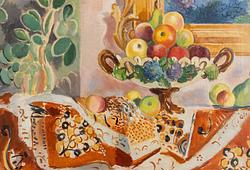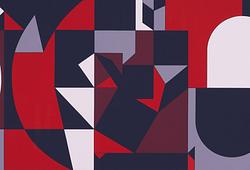Pablo Picasso
"Femme Assise"
Edition 2/10. Foundry mark "C. Valsuani cire perdue"
The motif conceived 1945. Bronze, dark patina, height 12.5 cm.
Provenance
August Heymans collection, Gothenburg, Sweden.
Literature
Spies-Piot 325 ; The Picasso Project 45-104.
More information
Pablo Picasso: namnet på den spanska konstnären framkallar omedelbart bilder av hans kubistiska porträtt; måleri från hans blå och rosa perioder; Guernica, mästerverket från 1937 samt den stora grafiska produktionen. Med omkring 4 500 målningar i sin oeuvre har inte överraskande mycket fokus koncentrerats på mästarens tvådimensionella konst.
Ironiskt nog för en sådan offentlig person höll Picasso en stor del av sitt konstnärliga skapande för sig själv. Hans skulpturer, cirka 700 stycken, var en av hans bäst bevarade hemligheter - han uppskattade dessa verk personligen och införlivade dem i sitt hem och sitt dagliga liv.
Picassos skulpturer började dyka upp i offentligheten efter deras första publika framträdande 1966 på den stora retrospektiven ”Hommage à Picasso” i Paris. Därefter följde ”The Sculpture of Picasso” på The Museum of Modern Art (MoMa) 1967, den första stora utställningen i USA som visade upp en betydande del av hans skulpturer, men ändå föll Picassos tredimensionella konst senare tillbaka under radarn.
Först år 2015 när MoMa visade en utställning som undersökte sambandet mellan Picassos tvådimensionella och tredimensionella verk i utställningen ”Picasso Sculpture” blev hans skulpturer återigen uppmärksammade. Auktionens ”Femme assise” är ett karakteristiskt exempel på Picassos skulptur, känslan och rörelsen som han utryckte i sitt målande och tecknande är här överfört till denna sittande kvinnofigur som nästan böljar fram.
Artist
Pablo Picasso (1881-1973), Spanish painter, printmaker, sculptor, and ceramist. Active in France since 1900. He is, alongside Matisse, the most dominant artist of the 20th century. After passing through a blue period, a pink period with circus scenes and harlequins, he created his first cubist painting, "Les Demoiselles d'Avignon," in 1907 under the influence of African sculptures. Together with Braque, he further developed cubism by breaking down surfaces, which were then represented in various simultaneous aspects. In 1912, he left nature and recreated a new reality, only to return to acrobats in 1916. During the 1920s, he approached surrealism and worked with whimsical forms while also producing drawings and etchings in line style. During the Spanish Civil War, he was violently stirred, and it is now that his great protest in the painting Guernica comes to fruition. In the late 1940s, he settled by the Mediterranean and produced nymphs, centaurs, and fauns, as well as paraphrases of the works of old masters, and painted powerful terracotta ceramics in Vallauris. His abundant graphic production follows the same development as his painting.
Pablo Picasso was not only an artist but also a skilled ceramist. During his lifetime, he created hundreds of ceramic works, such as jugs, vases, and plates. Picasso's passion for ceramics began when he visited the annual ceramics exhibition in Vallauris in southern France in 1946 and was introduced to the craft by the artist couple Suzanne and Georges Ramié, who owned the Madoura pottery. During the following years which he spent in Vallauris, Picasso met his second wife, Jacqueline Roque, whom he depicted on the ceramic pieces. He also decorated the ceramics with abstract animals and bullfighters in a cubist style.
Read more



























